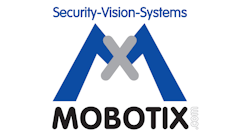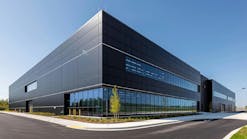The old saying goes, "necessity is the mother of invention" – for this year’s annual Security Technology Executive (STE) Innovation Awards, necessity proved to be the mother of innovation. From Manhattan to downtown Los Angeles, with stops in the nation’s capitol and Oklahoma City in between, each of the 2012 Security Innovation Awards finalist projects tackled complex security and networking challenges to deliver unprecedented risk management.
STE, along with the cooperation of the Security Industry Association (SIA) and a judging panel of security industry experts, proudly present this year’s Innovation Awards finalists, (in no particular order):
- The Los Angeles Police Major Crimes Unit project, submitted by Axis Communications;
- The Devon Energy Tower project, submitted by Dowley Security Systems;
- The Washington Metropolitan Area Transit Authority project, submitted by Verint Systems; and
- The NY Waterway Ferries project, submitted by Fluidmesh Networks.
The gold, silver, bronze and honorable mention projects were to be announced at the SIA Security Week Gala dinner at ISC East this week; however, because of Superstorm Sandy, those festivities have been postponed. Thus, the winning projects will be announced and all four finalists featured in the November/December issue of Security Technology Executive.
Here’s a brief overview of each of the finalists:
LAPD Major Crimes Division
Working closely with Richard Cowgill of the LAPD Major Crimes Division’s Technical Support Unit, two vendors — Axis Communications and U.K.-based Cobham — were able to help the LAPD overcome the limitations of streaming live video surveillance over a wireless cellular network; thus delivering real-time situational awareness, crowd management and decision making to the Los Angeles Police.
The primary objective of Major Crimes Division is the prevention of significant disruptions of public order in the City of Los Angeles. The 12-member Technical Support Unit (Tech Squad) is tasked with a myriad of duties, from providing situational awareness video for major events like the Emmys, Grammys and Lakers and Kings victory parades, to gathering intelligence for classified investigations and securing city-wide protests.
To circumvent bandwidth issues that arose from streaming video over the cellular network, IP radios were mounted around the city alongside 720p and 1080p HDTV Axis PTZ Dome Network Cameras to deliver real-time network video of major events around Los Angeles. In all, the new technology gives the police the real-time situational awareness they needed.
"This project tackled great challenges (including financial) and did not compromise security effectiveness," one judge commented. "The success came from initial education, research from other successes, willingness to prove performance through field deployments and understanding the technology challenges."
Devon Energy Tower
This project brought together a major utility and its Oklahoma City headquarters, which happens to be the 20th largest building in the United States; a security integrator; a consultant; an architect; and 12 different security-related technologies to create a turnkey solution based on a single, integrated platform for security command and control of all Devon Energy’s worldwide facilities.
Led by systems integrator Dowley Security Systems and overseen by Devon Energy Director of Corporate Security Kent Chrisman, multiple layers of technology were integrated into a single platform of command and control at Devon Tower. As an independent oil and natural gas exploration and production company with operations onshore in the U.S. and Canada, Devon Energy produces about 2.6 billion cubic feet of natural gas each day — more than 3 percent of all the gas consumed in North America. The innovative security design of the campus, coupled with best-in-class security products and services, provide a unique solution to Devon Energy’s complex and far-reaching security challenges.
The technologies included: Enterprise security management software from AMAG Access Control Solutions; card readers from HID Global; surveillance cameras from Axis Communications and Bosch Security Systems; visitor management gates & turnstiles from Gunnebo USA; X-ray detection systems from Smiths Detection; vehicle bollards and barriers from Nasatka; visitor management systems from STOPware; and intercoms from Stentofon.
"This is truly an innovative, integrated system application," one judge commented. "The overall environment of the project and its scope was quite extensive and addressed fully by the implemented technology. The integrator did quite a bit of customization of the application — which is impressive and really what a good integrator does. Cabling, connectivity and convergence was extensive in this project; in addition, security was blended with the environment in an aesthetic and seamless way."
Washington Metropolitan Area Transit Authority
This project solved the complex challenge of securing a vast transportation infrastructure across three major metropolitan areas. An array of different security-related technologies, including PSIM, Video Surveillance and VMS, and video analytics, were deployed by security integrator Schneider Electric to upgrade aging surveillance and security systems.
Deputy Chief Engineer of Communications & Network Systems, Marshall Epler helped oversee the security upgrade project – dubbed the Electronic Safety and Security Program (ESSP). The overall goal of the ESSP is to establish a platform that enhances situational awareness of emergency and operational personnel throughout the organization. It directed the organization to procure a video management system (VMS) from Verint, physical security information management software (PSIM) from CNL Software, and video analytic software from BRS Labs to monitor the various transportation modes within the authority. Surveillance cameras and the recording platform were provided by Mobotix, Axis Communications and Pivot3.
"The use of the VMS system goes well beyond traditional out-of-the-box specifications," one judge commented. "With so many different components, integration was key, and it was handled well. The use of behavioral recognition software is innovative for this type of project, and the application and use of grant funding is also impressive."
NY Waterway Ferries
Working closely with three vendors, New York Waterway and Facilities Operations Manager Jonathan Figueroa was able to improve communication, emergency response and preparedness throughout its fleet of ferries while overcoming the limitations of cellular-based networks.
Fluidmesh provided a seamless, high-speed wireless network on the Hudson and East Rivers, Upper NY Bay, and Atlantic Highlands (22 total shore locations) for live streaming video from 35 ferries; VoIP phones in all ferry wheelhouses; PA Service for emergency notification on ferries and at ports; and digital signage on vessels for mass notification. PantaScene provided security management systems; and A.A.S. Technologies deployed mass notification systems.
"This is a very innovative and valuable solution, designed to deliver ROI beyond security," one judge commented. "The technical challenge and environment was daunting, and the combination of the communications and situational awareness technologies to produce a solution of this value is impressive. Its application to provide additional benefit to the public (customer service, Wi-Fi) shows some very innovative thought that goes beyond security."
To learn more about the STE Security Innovation Awards, please visit http://www.securityinfowatch.com/magazine/stec/innovationawards.





